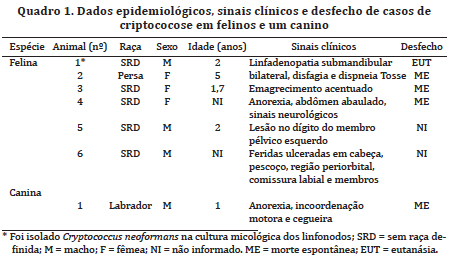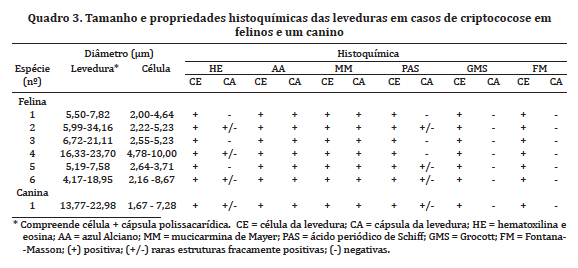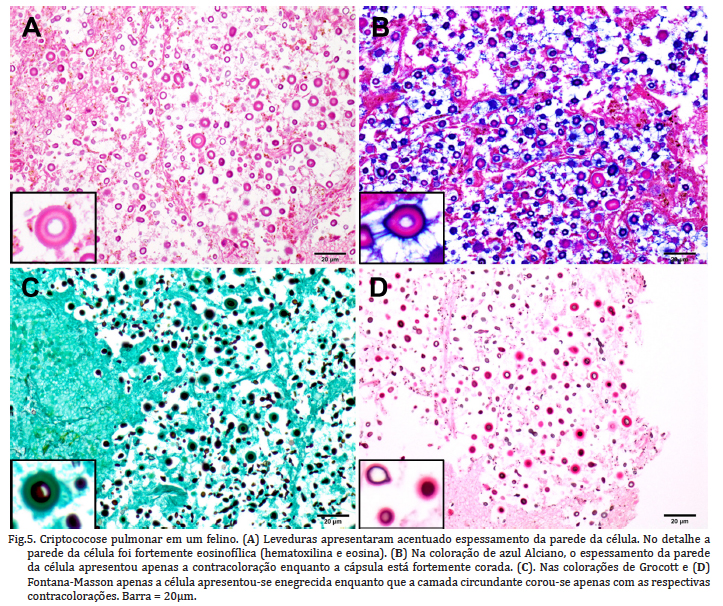Seven cases of cryptococosis (six cats and one dog) were studied to establish the determining histomorphological and histochemical characteristics in the histopathological diagnosis of this condition. Additional data related to the epidemiology, clinical aspects, sites of the lesions, and gross findings were obtained from the necropsy and biopsy protocols. Histologically, yeasts were observed inside macrophages or free in the parenchyma, associated with scarse to severe lymphohistioplasmacytic inflammatory reaction. In the hematoxylin-eosin (HE) sections, the yeasts were round, with a central cell containing a nucleus, surrounded by a clear halo (usually non-stained capsule). The techniques of periodic Schiff acid (PAS), Groccot (GMS), and Fontana-Masson (FM) were utilized and demonstrated the wall of the yeast cells. The FM stain showed the melanin present in these cells. The Alcian blue and Mayer's mucicarmin stains showed mainly the yeast polysaccharide capsule. The diameter of the cells ranged from 1.67 to 10.00µm and the full diameter of the encapsulated yeasts varied between 4.17 e 34.16µm. Yeast buddings were better observed through the PAS stain and were narrow based, simple or multiple, mainly in the opposite poles of the cells or forming chains. The definitive diagnosis of cryptococosis was established through the histopathological exam, based on the specific morphology of the agent (encapsulated yeast) and on histochemical proprieties, mostly in the cases without fungal culture.
Fungal infections; Cryptococcus spp.; cryptococosis; histomorphology; histochemistry; veterinary pathology; cats; dog








